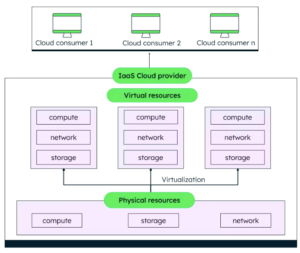Six signs you need to move your workloads to the public cloud
The cloud has become one of the leading technology platforms for businesses seeking a competitive advantage, but it raises some difficult choices for business leaders. With some cloud evangelists preaching the doctrine of downsized IT departments and cloud-first for everything, it’s easy to get confused about how to proceed with a cloud migration.
Pursuing an aggressive cloud migration strategy that has not been properly planned can leave you with the kind of problems around cost, risk and other issues you thought the cloud would resolve. The cloud is not a magic wand, and decision makers need to know how to harness its potential – starting with understanding when it makes sense to migrate. For that, it’s helpful to get to know some of the signs that may indicate it’s time to move your workloads to the cloud.
It’s time to replace your hardware
If you have just bought new hardware, you won’t be in a rush to shift your IT infrastructure to the cloud. But if your equipment is three or more years old, this is an optimum time to invest in cloud migration rather than new servers – particularly if your current server capacity is failing to keep pace with your business expansion. Buying even more server infrastructure is not an efficient scaling solution, whereas migrating to the cloud allows you to scale up or down almost instantaneously as required, without overprovisioning resources.
Most servers have a life expectancy of three to five years, depending on maintenance and upgrades, and replacing outdated hardware with expensive in-house servers makes little financial sense in most cases. Physical servers are not just costly to acquire, they are also expensive and labor-intensive to maintain – especially as they age.
If you use a data center to collect, store and process your data, check your contract’s renewal date. Data-center contracts generally expire after three years, so renewal time represents an ideal opportunity to consider the potential savings to be made by moving your storage and processing to the public cloud.
Your IT budgets are squeezed
IT costs are increasing all the time, but not having to buy, run and maintain in-house hardware is one way the cloud makes your IT budget go further. You also save by eliminating the time your DevOps team and system administrator spend on backups and the other largely manual tasks involved in on-premises infrastructure, allowing them to invest their time more productively in projects that will benefit your customers.
Cloud providers offer pay-as-you-go pricing, so you only pay for the computing power you use.
So why do so many companies blow their cloud budgets? With Couchbase research revealing that enterprises overspend by 35% in the cloud, it’s important to understand the Opex (operating expenditure) financial model that applies to the cloud. Without sufficient insight into where spend is occurring and how that spend can be aligned with cloud provider discount plans, it is easy to run substantially over budget.
Adopting a FinOps approach helps to instill a culture of cloud-cost optimization across the organization. And using a solution like DoiT’s Flexsave will help you get maximum benefit from cloud provider discount plans. It continuously monitors your on-demand cloud usage to automatically and intelligently identify opportunities for applying discounts to workloads from existing cloud provider commitments and savings plans.
Managing capacity has become an issue
Capacity spikes and dips have always caused headaches for IT managers. Investing in additional capacity to accommodate seasonal peaks in demand protects you against shortages of storage space, memory or processor capacity at key times – but it leaves you with the expense of purchasing and maintaining that capacity full-time, even when it’s not needed.
By moving workloads to the public cloud, you get additional capacity when you need it, but you can reduce it equally fast. It provides flexible scalability for applications that experience variable demand and removes the headache of planning and provisioning capacity – not to mention the cost of overprovisioning.
You want to bolster your security
Business leaders can be wary of the cloud because it requires an unfamiliar approach to security. Controls and practices such as traditional Intrusion Detection and Prevention Systems were developed for on-premises environments and will not work in the cloud, which relies on deeply integrated software solutions. A natural wariness should not detract from the substantial strengths of cloud security, particularly the fact that it takes much of the security burden from the shoulders of the organization.
Once decision-makers accept the shared-responsibility model of cloud security, the benefits become clear: Your cloud provider protects the cloud infrastructure, so you can rely on their considerable resources as they maintain the security of all the hardware, software, networking and facilities that run the cloud services you use.
Governance workflows and alignments are more agile and continuous in the cloud and involve a wider range of stakeholders than would be traditional for on-premises governance practices. However, automated solutions for governance and compliance streamline the deployment of applications in the cloud while reducing risk and simplifying the architecture.
You want to deliver innovative applications, faster
Enabling organizations to aggregate massive amounts of data for the kind of sophisticated analysis that delivers new and enhanced products and services is just one of the ways that cloud technology provides a competitive edge. Business agility and the ability to develop new, intelligent solutions to customer and internal problems are certainly among the prizes on offer with a successful cloud migration, but cloud investment must match the ambition of these innovation goals.
Migration strategies center on either retiring, retaining, rehosting, replatforming or refactoring your applications. The most advanced of these involves refactoring and re-architecting your workloads so that they are rebuilt with a cloud-centric view of the application stack. Typically driven by a strong business need to scale or improve features and performance, this approach emphasizes the use of cloud-native features that are simply not available in the application’s existing environment.
This is the costliest migration pattern, but it also delivers optimal results for companies seeking to exchange their monolithic architecture for a service-oriented (or serverless) architecture that enhances their agility or business continuity.
Organizations need to align their cloud innovation strategy with future business goals by making financial and technical decisions that enable the development of secure, data-driven solutions in the cloud. Extracting the most value from your cloud innovation strategy involves adopting a measured approach that incorporates business, technical and financial considerations.
Your leadership promotes cloud migration
Companies that successfully migrate more than 60% of their IT-hosting spend to the cloud by their target date are 32% more likely than others to have active CEO sponsors. Where CEOs advance the case for cloud adoption by establishing a top-down strategy and communicating it with the entire company, employees know that the cloud strategy has company-wide support.
Any significant cloud initiative will fail without leadership endorsement. The transformation required is not just business and technological but cultural and philosophical, so there must be active sponsorship from the top down.
Where to go when it’s time to migrate
Cloud migration should always be seen as a means to achieve your business objectives rather than an end in itself. Simply moving your workloads to the cloud will not deliver greater efficiency in terms of costs or operations, nor will it enable competition-crushing innovation.
However, working through the key stages of a cloud migration program with an expert cloud partner gives you the greatest potential for a transformative cloud adoption experience. DoiT International has achieved Migration Acceleration Program (MAP) competency status in the AWS Partner Network, and we are also a Premier and MSP Partner with Google Cloud.



